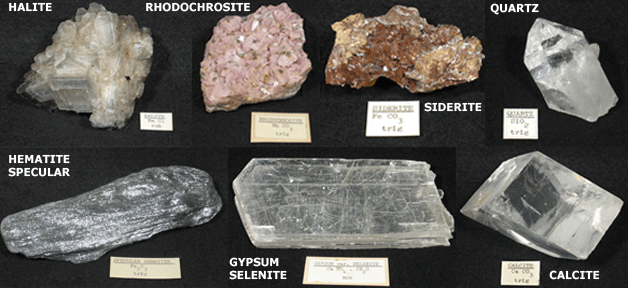
How Do We Categorize Minerals?
There are thousands of different kinds of minerals. Fortunately, they have systematic properties that allow geologists to organize them in a manner that makes it easier to understand their variety. Minerals belong to one of a variety of classes. These classes are based on the elements and crystal structure of a mineral.
Some common mineral classes include:
- Silicates
Silicates have a silicon atom surrounded by four oxygen atoms. Quartz (silicon dioxide, SiO2) is a common silicate. - Carbonates
Carbonates have a carbon atom surrounded by three oxygen atoms. Calcite (calcium carbonate, CaCO3) is a common carbonate found in limestones. - Sulfates
Sulfates have a sulfur atom surrounded by four oxygen atoms. Gypsum (calcium sulfate, CaSO4 2H2O) is a common sulfate. - Oxides
Oxides contain oxygen often combined with only one other (usually metal) element. Hematite (iron oxide, Fe3O4) is an example of an oxide. - Halides
Halides are salts (sodium chloride, NaCl, or table salt being one particular kind of salt).
All minerals within a mineral class are similar, but they also have important differences. For example, calcite (calcium carbonate), rhodochrosite (manganese carbonate), and siderite (iron carbonate) are all different kinds of carbonates. They all have the same carbon atom surrounded by three oxygen atoms, but they also have different atoms, such as manganese, iron, or calcium.

| Previous Item: Why is crystal structure important? |
Go Up: Learn About Rocks |
Next Item: Which minerals are common? |

